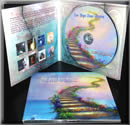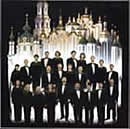Two Steps From Heaven

Classical Crossover

Sacred Choral Music
by Kiev Chamber Choir

Video:
Ukrainian Folk Music
Free Dog Clipart

Classical Crossover

Sacred Choral Music
by Kiev Chamber Choir

Video:
Ukrainian Folk Music
Free Dog Clipart
Russian Orthodox Church Sacred Choral Music on Amazon
ALL ABOUT
AVE MARIA LYRICS
Celine Dion: What Does She Sing?
MOBILE WEBSITE
 DOWNLOAD THIS SONG FOR FREE You won't find this song anywhere on the Internet. CHAPTER 3 : Recording tips from the Pros Move Around the Room Angle Your Amp Play with Mic Placement & Angles Get the Air Moving Focus the Energy Multiple Mics Re-amping. Play with Mic Placement & Angles Mic placement and mic angles go a long way toward capturing different tones from the same sound source. For example, to help record a very sibilant vocal performer, try angling the mic up toward a 45-degree angle and you might find a lot of that popping and hissing goes away. Just by taking a microphone and adjusting it a few degrees — or just a little bit to the left or the right — can make an enormous difference in the tones and sounds you capture on record. “If you are recording a guitar cabinet,” says Raison, “the sweet spot will vary from cabinet to cabinet. When you consider a speaker is a diaphragm that is physically moving air, bear in mind that the sound emanates from that ansgled cone — no sound comes from the center of the speaker. Aim the mic at the cone portion of it, or inwards or outwards, upwards or downwards, off axis a little, or towards the cabinet away from the speaker — in every single case, you will get a different kind of a tone.” Get the Air Moving If you’re recording with a computer, there are hundreds of software plug-ins that can emulate the sound of an array of guitar and amplifier combinations in a variety of ambient settings. But in the end, speaker emulators simply can’t push the air and do what a speaker does. Even in the most basic situations, if you put an instrument through a 10- or 12-inch cabinet, it will make a significant difference in the tonality of the instrument as compared to going direct from a rack mount effects processor or a computer plug-in. Focus the energy If you’re in a home studio environment and you don’t have a lot of control over the acoustics in your room, you can end up capturing a lot of unwanted early reflections, flutter echo, and the like. To get a sound that’s more direct, try taking sleeping bags, blankets, or cushions off your couch and build a little space, like a fort or a teepee, and put the microphone in it. You probably want to avoid using acoustic foam treatments for this, as you could lose too much high end. But something to focus the energy and cut out the ambient noise can help you capture the source more effectively. Another way to get a tighter, more controlled sound and get less of the room is to use a filter, like the Auralex MudGuard. For $100, it will create a baffle around the microphone and focus all of the energy into the mic so you pick up virtually no reverberation from the room. Multiple mics Before you consider using multiple mics in your studio, ask yourself how much experimentation you want to do. It may not be worth the extra work, as a single microphone can usually get the job done. When you introduce a second or third microphone into the equation, you’re introducing potential phase anomalies, e.g. two microphones picking up similar signals and canceling each other out. One microphone is safe and easy, with two or more microphones there are rules you have to follow, and they’re not necessarily going to get you a better or radically different sound. |
HOW TO MAKE HOME
|
DOWNLOAD THIS SONG FOR FREE
You won't find this song anywhere on the Internet.
HOW TO MAKE HOME RECORDING STUDIO